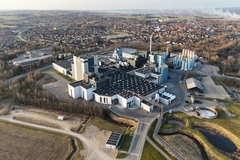Chr. Hansen has inaugurated its Industry Technology Center and celebrated major upgrade of offices in Moscow. Chr. Hansen has been present on the Russian market since 1998 and now cements its position by investing in a major upgrade of office facilities and establishing an application laboratory in order to be closer to the local customers and respond faster to their needs.
04 Dec 2012 --- Chr. Hansen has inaugurated its Industry Technology Center and celebrated major upgrade of offices in Moscow. Russia is the world's ninth largest economy worth $ 2.0 trillion. It is predicting 4.5 per cent growth this year reflecting increased per capita spending and a trend towards demanding Western European product types and quality. Chr. Hansen has been present on the Russian market since 1998 and now cements its position by investing in a major upgrade of office facilities and establishing an application laboratory in order to be closer to the local customers and respond faster to their needs.

“Our investment in new facilities represents confidence in the future of the Russian market.We will continue to strengthen our presence and develop the local dairy and food industries together with our partners, based on ongoing research and development and a good understanding of the rapidly changing consumer trends,” says Dmitriy Chausov, Country Manager, Chr. Hansen Russia.
“The Russian customer base is changing. The international customers are consolidating and getting bigger, and with that the demand on products and services are increasing,” explains Kristian Elsborg, Area Country Manager, North Europe. “This leaves us with great business potential. One example is our new protective cultures FreshQ aimed at fresh dairy products, which are well suited for the local Russian fresh cheese product, Tvorog. However, that calls for running a number of trials in order to find the optimum recipe with a good flavor profile, and that we can do in a fast and smooth manner now”.
Another potential is within natural colors, as a new law will come into force in Russia in June 2013. The new law is aligned with European legislation requiring labeling of certain synthetic colors. The new application center can assist customers in converting to natural colors by running trials in food and beverage applications, performing light and storage stability studies etc., until the optimum solution has been identified.
“We are very pleased to inaugurate the new center. We see it is a competitive advantage to have the strength and resources to assist our customers as we do. Local application facilities on the strategically important Russian market will reduce development cycles, increase local service levels and bring us closer to our customers. We can test our concepts in local milk and local applications before we release in the market, and we can react swiftly to our customers’ technical problems,” concludes Elsborg.













